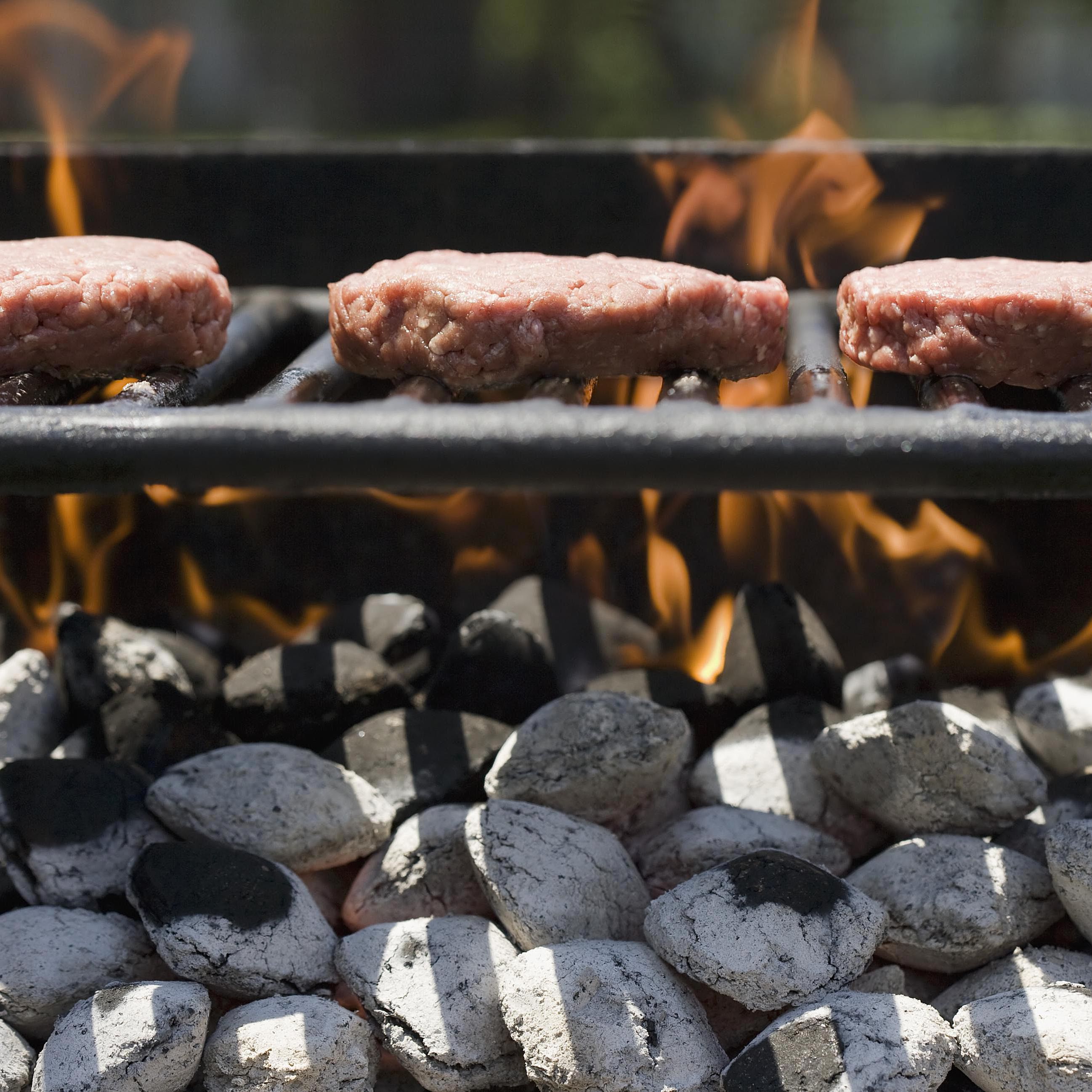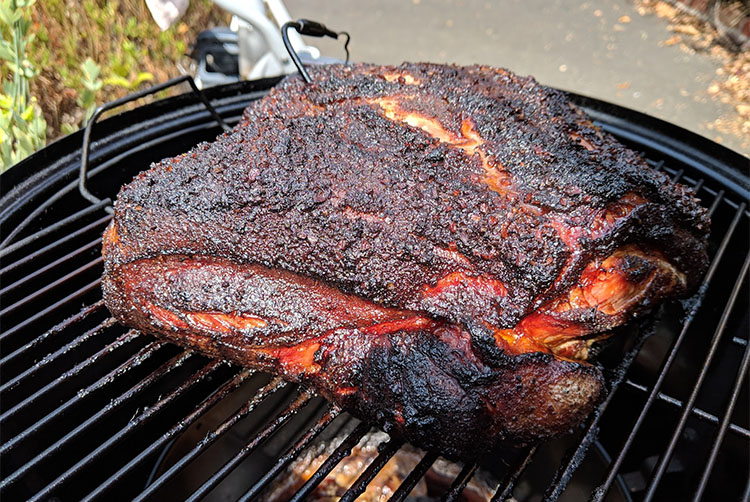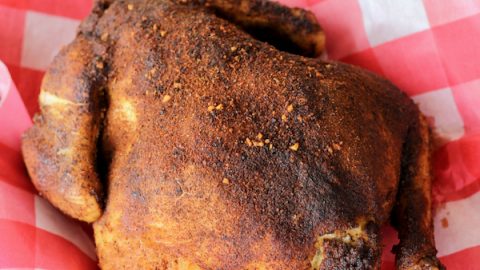
Cook your food on coals for maximum heat. You will get more heat from a charcoal grill that has wide vents. If your flames are high, you have enough oxygen flowing through. If your flames are low, there is not enough oxygen. If your food is not cooking quickly, close the vents. The heat will rise the more you turn up the flames. If the flames appear too low, it is because you are using too much charcoal.
Intake vent
You may have encountered an intake vent when cooking on a charcoal barbecue. This device is used to provide oxygen to the combustibles. This is the source of the grill's "fuel." The more open the vent is, the more oxygen can enter the grill and therefore raise the temperature. The oxygen rate can be controlled to control the temperature of the grill.
The main way to control the temperature is by using the charcoal grill's intake ventilation. Two arrow marks should be found near the vent. If the arrows point to half-open, the vent is open. The top lid contains the oxygen and exhaust dampers. You can adjust the heat and intensity of your fire by opening or closing the top lid. This means that the more vents you have, the hotter your fire will become.
The vents on the charcoal grill should be opened as much as possible. The vents can be left open and result in charcoal that burns hotter and quicker. The grill's internal temperature can be reduced and smoke production decreased by closing the vents. The bottom vent should always be opened and the top should be closed. If you see too much smoke when cooking, only open the bottom one. If it does not, you can close it completely or halfway.
Another component to be considered is the outtake vent. The outtake valve pulls oxygen from your air. Wood and charcoal fires are gaseous, so if the vent is not set up properly, it will choke off oxygen. To ensure the correct temperature, adjust the intake vent before you start cooking. Beginners should start at the intake and then work their way up.
Exhaust vent
The exhaust vent of a charcoal grill regulates the amount air allowed to enter the cooking area. When the vent is partially or fully open, more oxygen will enter the cooking area, which will result in a hotter fire. Vents that are closed will allow less oxygen to the cooking area. This can lead to a smaller fire and a starved fire. Controlling the exhaust vent requires consideration of many factors.
A charcoal grill's exhaust vent is designed to balance the oxygen in the bottom chamber with the amount of oxygen that is in the top chamber. The key to cooking the perfect hamburger is having control over these two fuels. The charcoal grill exhaust vents are sometimes called dampers. They do not allow heat to escape, but instead control the temperature. Proper use of the vent is a way to improve the taste of your food while keeping it juicy and tender.
The exhaust vent is the most important part of a charcoal grill. To get the best heat out of the charcoal, cook it directly on the coals. However, if you want to control the temperature, you can use the 2-zone method. Two-zone cooking allows you to move the food around and cook in sections. To help regulate the flame, you can open the top vent if the food is too hot.
An intake damper is the second part of an exhaust vent for charcoal grills. This vent sits on the bottom of the grill. Open the vent to reduce oxygen consumption for wood and charcoal. The intake damper is typically located on the bottom of the grill. If the vent is not closed, the fire can reach higher temperatures than the other. It heats the fire and makes it more efficient, allowing you to cook more food while not having to open the lid.
Intake damper

Charcoal charcoal grills are air-cooled by an intake vent. Oxygen enters the grill as heat rises. An effective charcoal grill intake damper allows air to flow into the grill. The grill will breathe more oxygen if the intake damper is open. An enclosed vent reduces the oxygen levels. Too much air can make coals too hot and cause food to burn. The coals will die if the damper is closed.
Vents and dampers are often called intake and exhaust vents, but these are the same thing. A charcoal grill's lower section has an intake damper, and the top has an exhaust vent. The exhaust and intake ports on charcoal grills are set up to draw oxygen as fuel. Keeping them open will allow you to cook your food at the right temperature. You will get more smoke from a charcoal grill that is hot.
The charcoal grill intake damper can be adjusted to enhance or restrict the temperature. The larger the vent opening, the more oxygen is allowed in. The smaller the airflow, the cooler the charcoal grill will be. There are two dampers on charcoal grills. One is located on the lid, and the other in the bottom. The temperature of the charcoal grill's overall temperature is controlled by the damper. To get the best smoke flavor, keep the damper open. When adjusting the intake damper, keep in mind that the charcoal grill intake damper will take up to 10-20 minutes to settle.
The charcoal grill intake damper prevents the fire spreading beyond control. Without a lid, the charcoal is in a volatile state and will burn until it is reduced to ashes. One of the easiest ways to put out a charcoal grill is to close the vents, as they prevent drafts, smother the fire, and control the temperature. This is also known as a "fire triangle" and is a system for controlling the temperature of the grill.
While the grates are still warm, clean them.
It is easier to clean the grates of your grill while they are still warm rather than using harsh chemicals and metal tools. To clean your grill grates, soak them in a mixture of two cups vinegar and one cup baking soda. Let the solution sit for around an hour before you scrub the grates with steel wool or a scouring paper. This method is safer, more efficient than other chemical solutions, and better.
Clean your grill grates after each cooking session. You can remove any food from the grill grates that has become brown by using a stainless-steel brush. To remove food that has been browned, you can use either a separate scraper (or the built-in one) to scrape it off. Take out any brush bristles that are loose. Once you have scrubbed the grates thoroughly, rinse them and then dry them.
If you have cast-iron grates, you should make sure to wash them with soap and water. Grates that have a lot of grease buildup could result in them losing their nonstick properties. To keep your grates looking fresh, you must thoroughly clean them. The same is true of porcelain grill grates, which should be cleaned by hand with soap and water. To prevent rusting, you may use vegetable oil in place of a cleaning solution.
Aluminum foil can also be used for cleaning the grill grates. To make it easier to use, crumple the aluminum foil into a small circle. You can remove food from the grill grates by using a brush. Let the grill cool completely before wiping it. This will allow you to ensure it is completely cleaned. If you have a charcoal grill, you can leave it on for a few minutes after cooking.
Checking the vents

The charcoal grill's ventilations regulate the temperature and amount of oxygen that is emitted from the charcoal. How to use the vents properly will make charcoal grilling easier. This will help you control the temperature, flavor and aroma of your food. You should also close all the vents when you're done cooking to prevent a fire and allow the grill to cool down properly before storing it.
A charcoal grill's cover can rust if it has received heavy rain. This rust can prevent the vent from being open and allow oxygen to enter the grill. This can lead to semi-cooked meals or semi-burnt carbon. A charcoal grill's vents are essential to the grill's proper functioning. You can prevent them from becoming damaged and make your cooking experience even more enjoyable.
A vent's role is to regulate the amount of oxygen that enters the grill and how much oxygen escapes. If you are cooking in winter when oxygen is less, the bottom vent will be more important. The food will cook much faster. Temperature regulation is the purpose of a vent. If the vent is not functioning, an aluminum pan with similar effects can be used. You can still cook more food with it, even though the temperature won't change as much as water.
The top vent is also called the exhaust damper. It is crucial to use the damper correctly when charcoal grilling. If it's closed too much, the fire will be too hot and you'll get too much smoke. For the best smoke flavor, it is important to set the settings correctly. The vent damper must be adjusted in accordance with the type and preparation of your food. The type of charcoal grill used should also be taken into account.
FAQ
What are the requirements to become a chef?
A bachelor's degree in culinary art is necessary to become a professional chef. A series of tests must be passed by the ACF. After you have completed all requirements, you will receive a certificate confirming your qualifications.
Can you be a self-taught cook?
Yes, you can self-teach cooking! No matter how much you know, cooking is something that everyone enjoys. You can learn to cook by starting at home. Start small, such as making pancakes for breakfast and spaghetti sauce at dinner. The best way to learn how to cook is to try new recipes and experiment. You might make a few errors along the way.
You can learn to cook in a matter of hours or weeks depending on your level of cooking ability. Remember that cooking is not about following recipes. There are so many ways to prepare food.
What should a beginner chef learn?
For beginners, it is best to begin with something simple like pasta, rice or soup. For those who want to learn how cook, a recipe book is a good option. Cooking is fun when you do it with someone else. Have a group of friends cook, or cook together.
How Do I Learn About Cooking?
There are numerous cooking classes offered across the country. Many schools offer courses on baking, pastry, or wine tasting. If you want to learn more about cooking, you can enroll in a class at a local community college or vocational school, or attend one offered by a private institution.
Where can I find high-quality kitchen equipment?
You can purchase high-quality kitchen equipment online. You can find all kinds of kitchen tools on a variety of websites. Before purchasing any kitchen equipment, however, make sure that you read reviews and ratings before buying anything. You can also ask other people who own similar items if they would recommend them.
Statistics
- According to the BLS, chefs earn $58,740 a year. (learnhowtobecome.org)
- You'll be amazed that over 90% of CIA students receive scholarships and grants to finish their culinary studies. (ischoolconnect.com)
- In the United States, the category is estimated at $23.2 billion annually and is growing faster than the market. (washingtonpost.com)
External Links
How To
How to cook steak
The type of meat you are cooking will determine the right method to use. Thicker steaks can be cooked on a low heat. Thicker steaks need to be cooked at higher temperatures.
They will lose their flavor if they are overcooked. Don't forget to take the steak out of the pan once it's finished. This will ensure that you don't burn your self.
Cooking times depend on the size of the steak and the desired degree of doneness. Here are some general guidelines:
Medium Rare: Cook till medium rare. This is when the internal temperature of the food reaches 145°F (63°C). This should take between 3 and 5 min per side.
Medium: Cook the meat until it reaches 160°F (71°C). This typically takes 6 minutes per side.
Good Cooking: Cook the meat until it is done. This means that the internal temperature reaches 180F (82C). This usually requires 8 to 12 minutes per side.